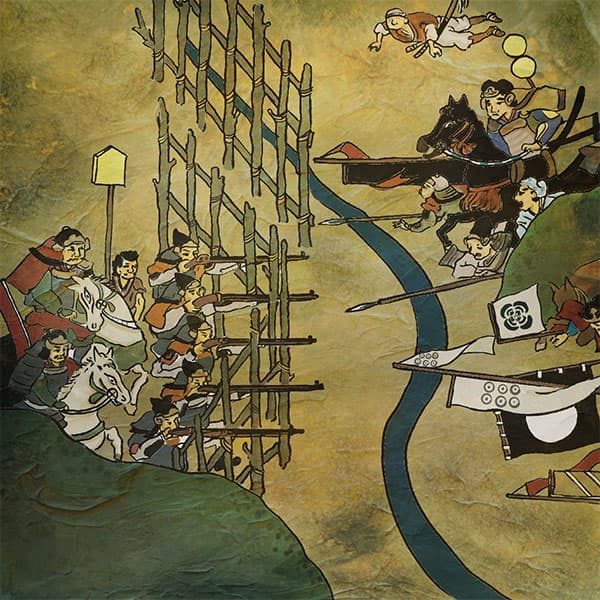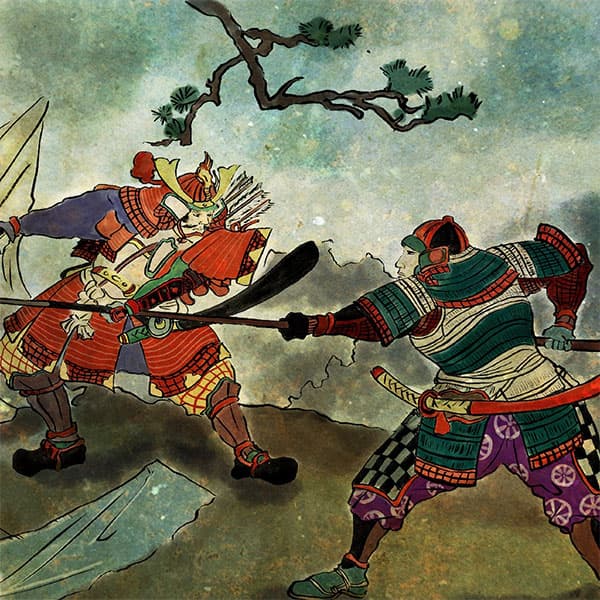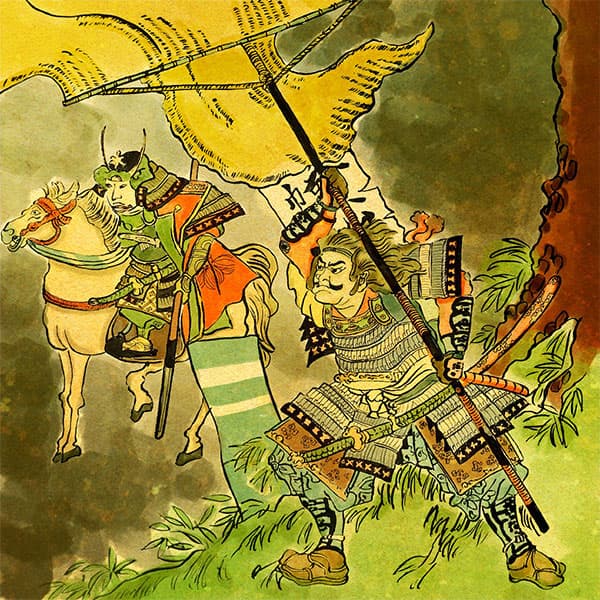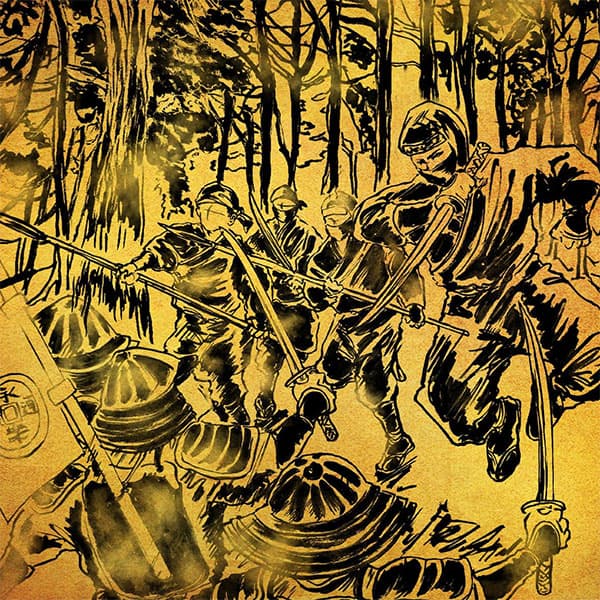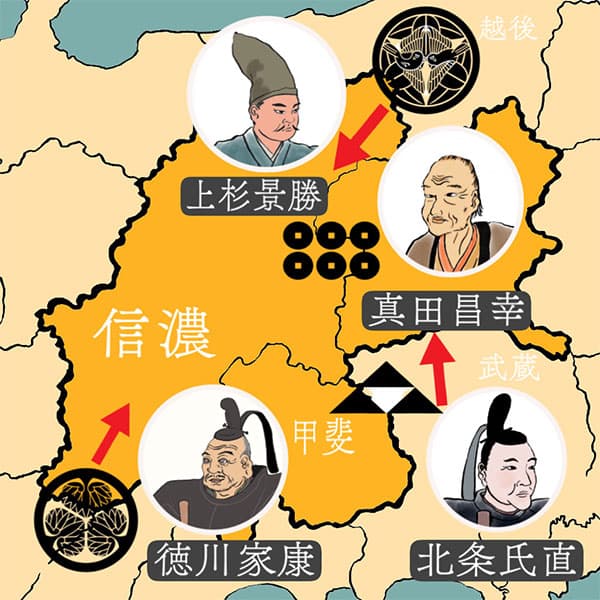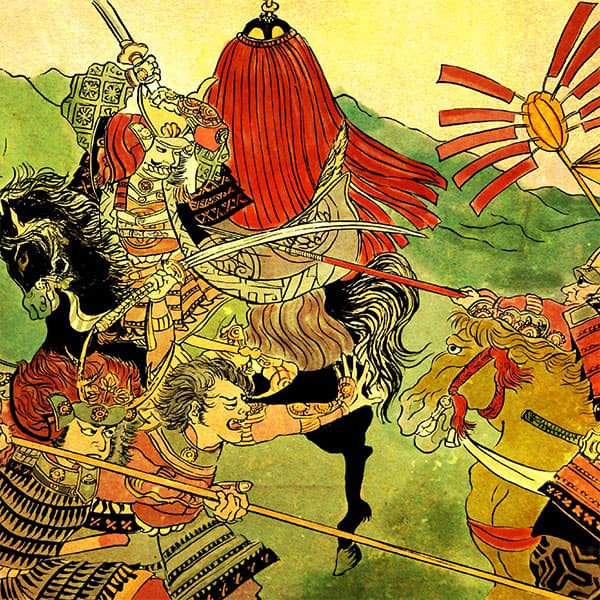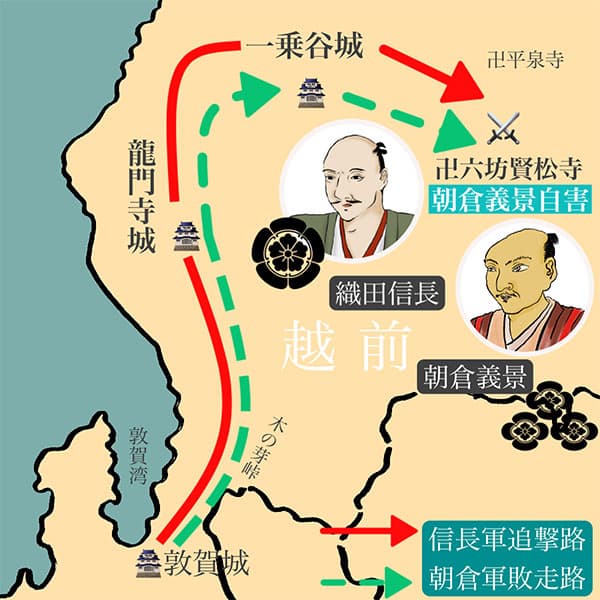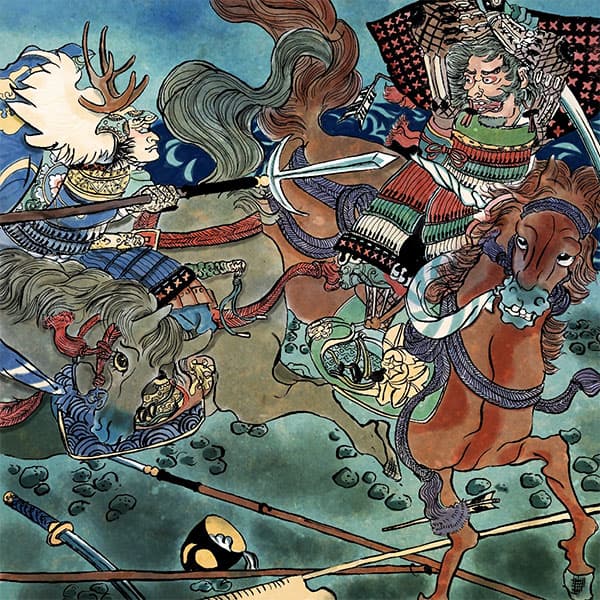Oda Nobunaga (1/2)A military commander who fell before the unification of the country
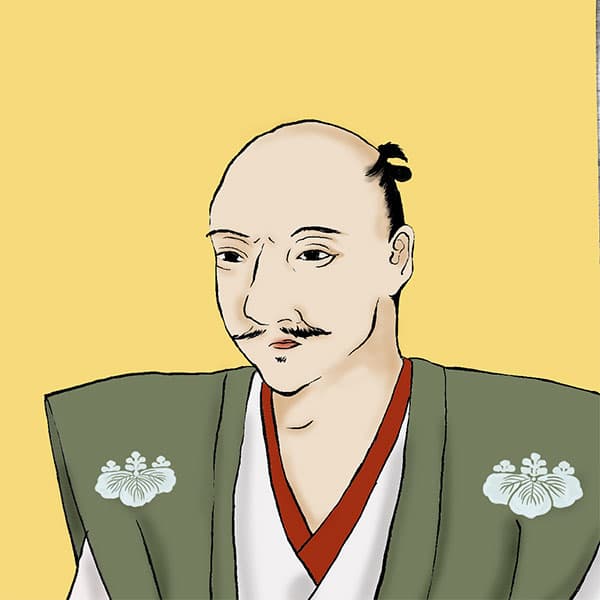
Oda Nobunaga
- Article category
- biography
- name
- Oda Nobunaga (1534-1582)
- place of birth
- Aichi prefecture
- Related castles, temples and shrines

Kiyosu Castle

Komakiyama Castle

Gifu Castle

Sunomata Night Castle
- related incident
What impression do you have of Oda Nobunaga, who is extremely well known and popular among the Sengoku warlords? He is not only considered one of the three great heroes, but is also a military commander with many ups and downs, from his battle episodes to his innovative side and even his tragic death. My life was not always smooth sailing, and at times I was faced with some painful events, and my life could truly be called a drama.
This time, we will introduce the life of Oda Nobunaga.
Birth of Oda Nobunaga
In May 1534, Oda Nobunaga took over Oda Nobuhide, a local lord of Owari (western part of Aichi Prefecture).
Born as a child. His father, Nobuhide, was from the Oda Yamato no kami family (Kiyosu
It was a branch of the Oda family. The family was known as the three Kiyosu magistrates, and their power rapidly expanded during Nobuhide's time.
went.
Nobunaga was given Nagono Castle, which had been captured by Nobuhide, early on and became the lord of the castle. Since he was a child, he had many eccentric behaviors, and those around him called him ``the big boy''.
In 1547, he made his first appearance in a skirmish with the Imagawa family. The following year, peace was established with Dosan Saito, a Sengoku feudal lord in Mino Province who had been hostile to his father Nobuhide, and as proof of this, Dosan's daughter Nohime (Kichou) was married to Nobunaga. it was done.
After that, after the death of his father Nobuhide, Nobunaga took over the headship of the Oda Danmasada family, destroyed the Oda Yamato no kami family and the Oda Isemokami family of the Owari shugo, and also eliminated his younger brother Nobuyuki Oda, gradually gaining control of the Owari province. I solidified it.
Battle of Okehazama
Oda Nobunaga strengthened his foothold in Owari Province, which was his fiefdom, by eliminating hostile forces within Owari Province and his younger brother Nobuyuki Oda. Meanwhile, in May 1560, Yoshimoto Imagawa, the shugo of Totomi Province in Suruga Province (present-day Shizuoka Prefecture), invaded Owari Province. The Imagawa clan's army, which ruled not only Suruga and Totomi but also Mikawa Province (present-day eastern Aichi Prefecture), was a large army with between 10,000 and 45,000 soldiers. The Oda army fought against this, but it is said that their army numbered only a few thousand men.
The Imagawa army, spearheaded by the Mikawa army commanded by Motoyasu Matsudaira (later Tokugawa Ieyasu), attacked the forts of the Oda army. In response, Nobunaga proceeded along the Tokaido road and assaulted the main camp of the Imagawa army, which was extending vertically, and defeated Yoshimoto (Battle of Okehazama).
After the Battle of Okehazama, the Imagawa clan's power declined rapidly due to the defection of the Matsudaira clan of Mikawa Province. Taking this opportunity, Nobunaga allied himself with Motoyasu Matsudaira (later Tokugawa Ieyasu), who had become independent from the Imagawa clan's rule, and the two formed an alliance to strengthen each other's backs.
Conquest of Mino Province
When Dosan Saito, the father of his wife Nohime (Kichō), passed away, the relationship between Oda Nobunaga and the Saito clan turned sour. Around the time of the Battle of Okehazama, both sides sent out their troops and engaged in a back-and-forth battle.
However, in 1561, Dosan's son Saito Yoshitatsu suddenly died, and Yoshitatsu's son Saito Tatsuoki succeeded him, and Nobunaga gradually expanded into Mino Province.
Around the same time, he formed an alliance with Nagamasa Asai of Kita-Omi by having his sister Oichi join him, and strengthened his control over the Saito clan.
Meanwhile, in May 1565, the Miyoshi family, which had long been powerful in the Kinai region centered on Kyoto, murdered the shogun Yoshiteru Ashikaga, with whom they had a deepening conflict (the Eiroku Incident).
Yoshiteru's younger brother Yoshiaki Ashikaga (Kakukei Ichijoin) escapes from Yamato Province (present-day Nara Prefecture) and uses Yajima in Omi Province as his base to seek cooperation from various feudal lords to move to Kyoto. Nobunaga also sent a letter to Yoshiaki in December of the same year, promising to cooperate with Yoshiaki's move to Kyoto. With the cooperation of Nobunaga and others, Yoshiaki achieved a ceasefire between Nobunaga and the Mino Saito clan in order to move to Kyoto.
However, in August 1566, Nobunaga prioritized maintaining the order of his territory, broke the truce, and invaded Mino Saito.
We will resume the fight against Mr. Then, he made the lord of Kajida Castle, Sato Tadayoshi, and the Kajida clan his allies, and acquired the castles of Chuno. Morinari Ando) and others will be on his side.
In the 10th year of Eiroku (1567), he defeated Tatsuoki Saito to Nagashima, Ise Province, and took possession of Inabayama Castle, the residence of the Saito clan. At this time, Inabayama Castle was renamed Gifu Castle.
In this way, Nobunaga came to rule Mino Province as a fief, following Owari Province.
In November of the same year, Nobunaga began using the ``Tenka Fubu'' red seal. The word ``Tenka'' in this seal is thought to refer not to Japan as a whole, but to the Gokinai (Kinki) region, and the idea was to restore the Muromachi shogunate and subdue the Kinki region.
Support for Yoshiaki Ashikaga
Around the same time as the capture of Inabayama Castle in Mino Province, Oda Nobunaga made a full-scale invasion of Kita Ise, and the Kobe clan of Kita Ise adopted his third son Nobutaka Oda, and the Nagano clan adopted his younger brother Nobuyoshi Oda (Nobuaki). As a result, he consolidated his control over the eight northern Ise counties.
Meanwhile, Yoshiaki Ashikaga escaped from Omi Province and stayed with Yoshikage Asakura in Echizen Province, hoping for an opportunity to go to Kyoto. However, due to the surrounding environment, Asakura Yoshikage was unable to go to Kyoto with Yoshiaki.
In July 1568, Nobunaga dispatched his subordinates Sadakatsu Murai, Mitsuharu Fuwa, Hidemitsu Shimada, and others to Echizen Province to support Yoshiaki and go to Kyoto. Yoshiaki left Ichijodani and headed for Mino Province, where he held a meeting with Nobunaga at Risseiji Temple in Gifu Castle.
In September of the same year, Nobunaga enshrined Yoshiaki Ashikaga and began his march to Kyoto. The Miyoshi family, which ruled the Kinai region, had split internally, and members of the Miyoshi family, including Yoshitsugu Miyoshi and Hisashi Matsunaga, cooperated with Yoshiaki's move to Kyoto and worked to check the anti-Yoshiaki forces.
Meanwhile, as Nobunaga supported Yoshiaki and moved to Kyoto, Rokkaku Yoshikata and Yoshiharu, father and son, from southern Omi fought against the Oda army, but were defeated and abandoned their castle, Kannonji Castle. Further advancing the army, they marched to Otsu at the southern end of Lake Biwa, where the guardians of Kawachi Province, Settsu Province (present-day northern and eastern Osaka Prefecture), and the locals, also sided with the Oda side, and the Miyoshi family, who had been on an expedition to Yamato Province, resisted. Unable to do so, he retreated to Shikoku.
Nobunaga went to Kyoto, and Yoshiaki Ashikaga became the 15th Shogun of the Muromachi Shogunate.
Anti-Oda Encirclement Line
In 1570, Oda Nobunaga sent troops to attack the Asakura family in Echizen (present-day Reihoku, Fukui Prefecture), but was betrayed by his sister-in-law, Asai Nagamasa, and fell into a difficult situation.
In June, Nobunaga narrowly escaped the crisis and won a battle against the Asakura and Azai families (Battle of Anegawa). From here, they faced a tough battle against the Asakura family in Echizen, the Azai family in Kita-Omi (present-day northern Shiga prefecture), the Miyoshi family in Shikoku, Ishiyama Hongan-ji Temple in Osaka, and Enryaku-ji Temple on Mt. Hiei. In that year, peace was concluded with various powers through the mediation of Shogun Yoshiaki Ashikaga and Emperor Ogimachi.
However, the following year, Nobunaga's relationship with Yoshiaki Ashikaga, whom he had supported, began to deteriorate. Yoshiaki began to take an anti-Nobunaga stance and urged powerful daimyo from all over the country to move to Kyoto. Takeda Shingen of Kai (present-day Yamanashi Prefecture) responded to this request. In 1573, Takeda Shingen responded to Yoshiaki's request and led his army to Kyoto, leaving Kai. He defeated Ieyasu Tokugawa, who was allied with Nobunaga, in Totomi Province (present-day western Shizuoka Prefecture) (Battle of Mikatagahara), but died of illness on the way. The Takeda family returned to Kai on their way to Kyoto.
Nobunaga came back to life with this. Yoshiaki Ashikaga, who took an anti-Nobunaga stance, was expelled from the capital, and anti-Oda forces throughout the Kinai region were expelled.
In 1575, Takeda Katsuyori, who succeeded Takeda Shingen, who had tormented Nobunaga, fought alongside Tokugawa Ieyasu in Mikawa Province (present-day eastern Aichi Prefecture) and won the battle (Battle of Nagashino).
Ishiyama Honganji Temple was the only one that resisted until the end. In 1580, Nobunaga made peace with Ishiyama Hongan-ji Temple and gained complete control of Kinai.
After subduing the Kinai region, they faced off against the Mori family in the Chugoku region, the Chosokabe family in Shikoku, the Uesugi family in Hokuriku, the Takeda family in the Chubu region, and the Hojo family in the Kanto region.
In 1582, Nobunaga conducted the Conquest of Koshu in order to subjugate Takeda Katsuyori, who had taken control of the Chubu region. Katsuyori committed suicide on Mt. Tenmoku, and the Takeda family was destroyed. In this way, the Oda family included Kai and Shinano (present-day Nagano Prefecture) in their land map.
Everyone probably thought that the country was already in Oda Nobunaga's hands.
Honnoji Incident
On May 29, 1582, Oda Nobunaga marched from Azuchi Castle to Kyoto, leading only the peasants without his attendants, in order to prepare for a Chinese expedition against the Mori clan, including Terumoto Mori, who was still resisting. I stayed at Honnoji Temple.
- related incident

- WriterTomoyo Hazuki(Writer)I have loved history and geography since my student days, and have enjoyed visiting historical sites, temples and shrines, and researching ancient documents. He is especially strong in medieval Japanese history and European history in world history, and has read a wide range of things, including primary sources and historical entertainment novels. There are so many favorite military commanders and castles that I can't name them, but I especially like Hisashi Matsunaga and Mitsuhide Akechi, and when it comes to castles, I like Hikone Castle and Fushimi Castle. Once you start talking about the lives of warlords and the history of castles, there's a side of you that can't stop talking about them.





